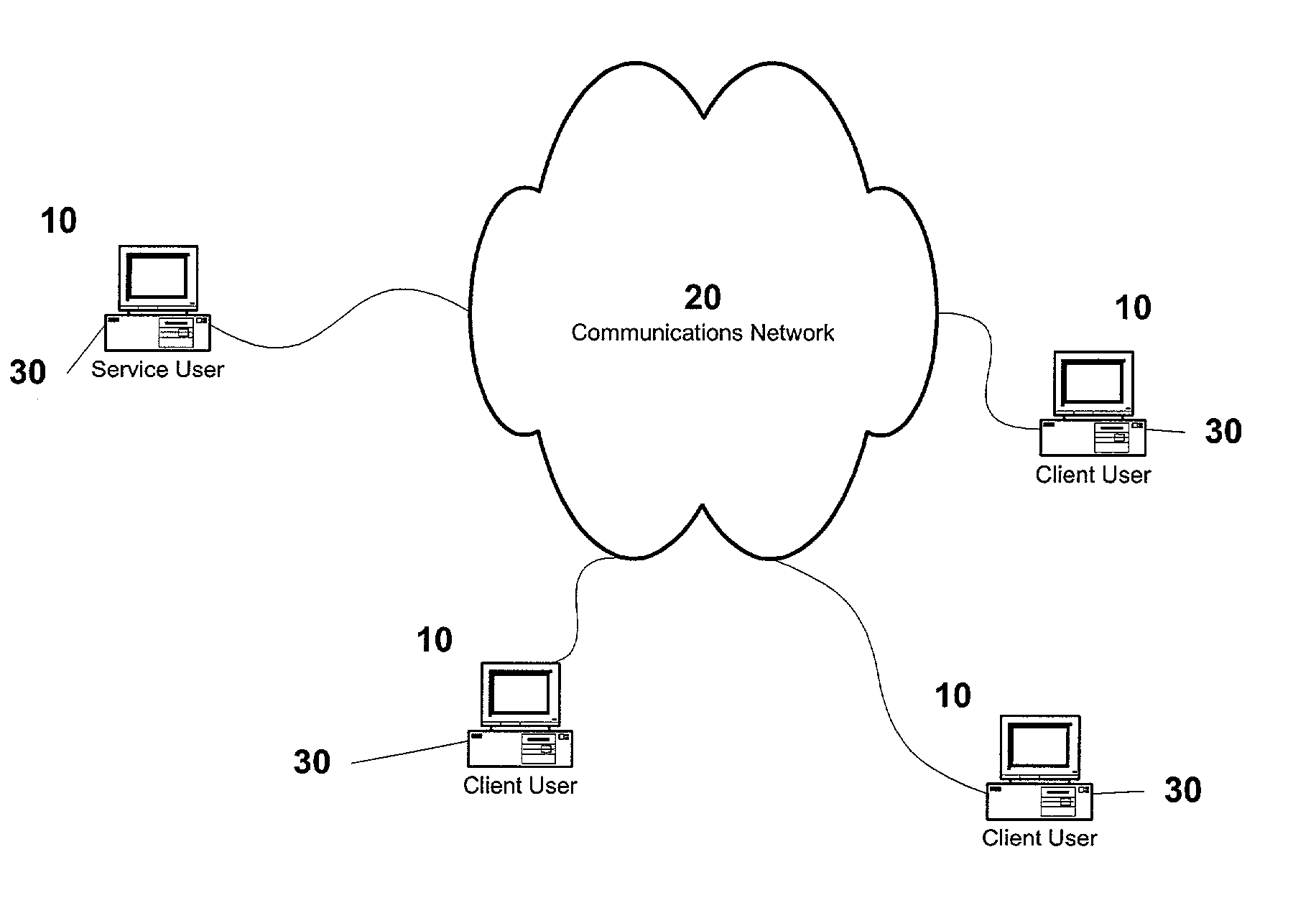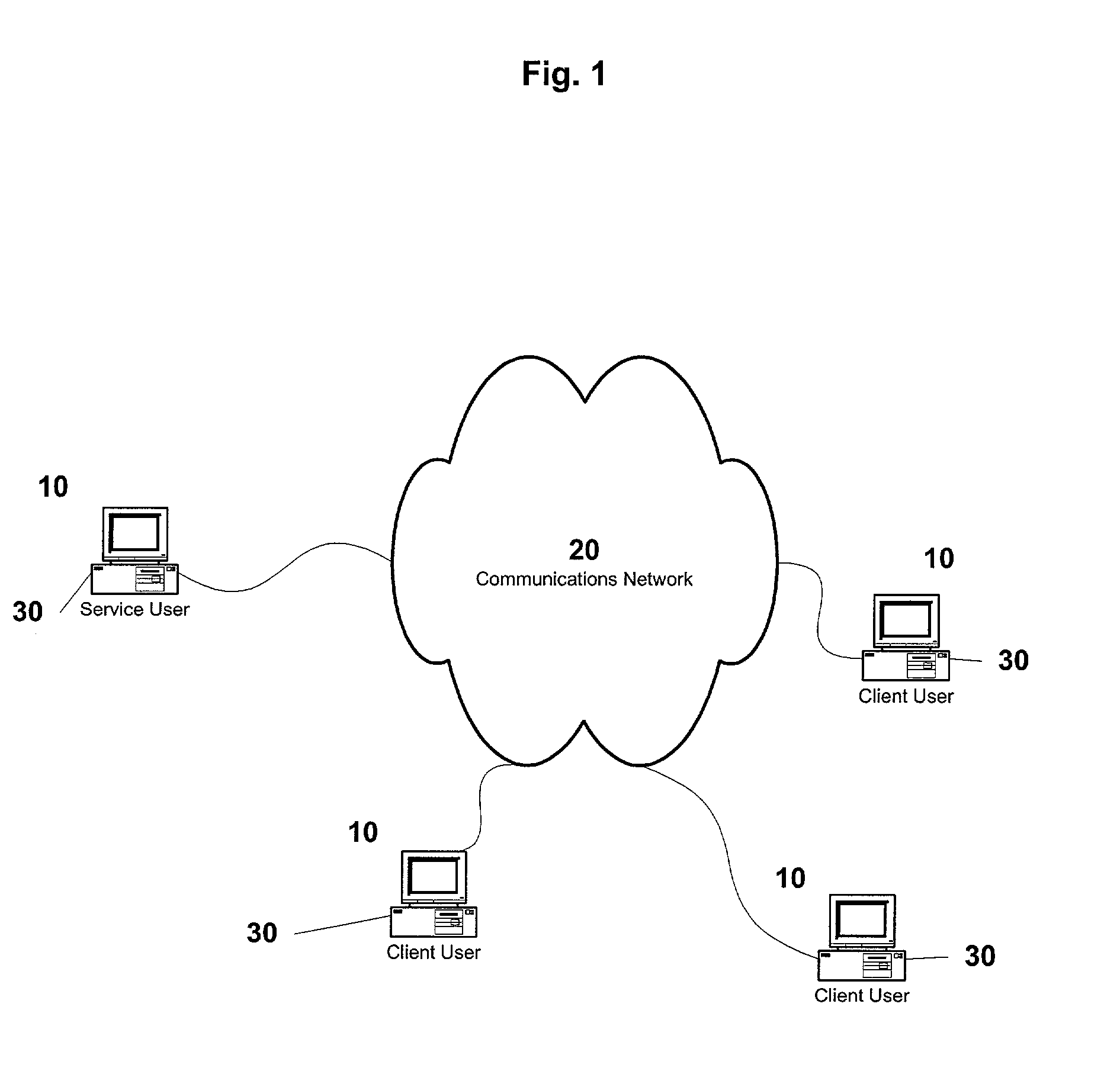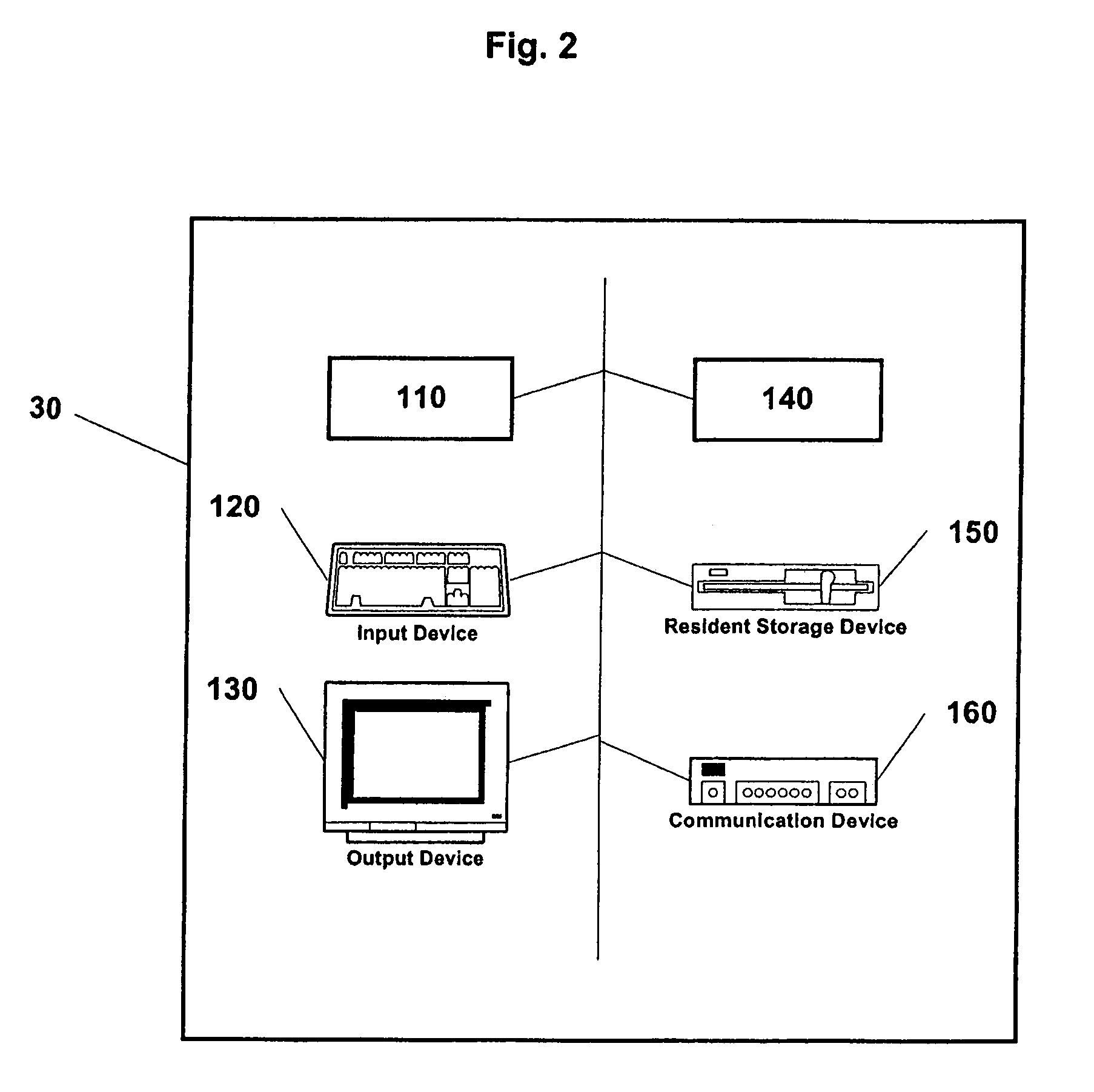System and method for in-line editing of web-based documents
a web-based document and system technology, applied in the field of systems and methods for editing web-based documents, can solve the problem of cumbersome editing of html documents by remote users
- Summary
- Abstract
- Description
- Claims
- Application Information
AI Technical Summary
Problems solved by technology
Method used
Image
Examples
case 1
[0062]Case 1) The first such situation, illustrated in FIG. 5a and 5b, is when a portion of the WBD selected for in-line editing contains “closing” or “opening” object tags that could effectively negate the behavior of the original two in-line editing tags. This is most likely to arise with complex WBDs utilizing Cascading Style Sheets (CSS) or other external style document object model languages to describe how they should be visually displayed. To prevent this, the in-line editing software scans the portion of the WBD to be edited for predetermined “negating” tags (e.g., CSS properties that specify that a font weight should be regular rather than bold: style=‘font-weight:regular’). If such “negating” tags are found, the in-line editing software surrounds the “negating” tags with additional copies of the necessary in-line close and open tags to ensure that the in-line tags take the desired effect and the selection start and end flags are only set on the very first and last in-line ...
case 2
[0063]Case 2) Furthermore, if the in-line editing software were to simply insert in-line editing tags before and after the selected portion, the original WBD's strict tag nesting hierarchy might be broken causing the browser to display the WBD incorrectly. As will be understood by those of skill in the art, less forgiving web browsers strictly enforce the hierarchical nature of object tags (i.e., they enforce the principles of HTML tag nesting). This may occur, for example, if:[0064](a) the portion of the WBD to be edited contains one or more close object tags corresponding to open object tags located before the start of the portion to be edited;[0065](b) the portion to be edited contains one or more open object tags corresponding to close object tags located after the end of the portion to be edited, or[0066](c) the portion to be edited contains spurious or invalid object tags that do not correspond to other object tags in the WBD.
[0067]To detect and contend with Case 2a as illustr...
PUM
 Login to View More
Login to View More Abstract
Description
Claims
Application Information
 Login to View More
Login to View More - R&D
- Intellectual Property
- Life Sciences
- Materials
- Tech Scout
- Unparalleled Data Quality
- Higher Quality Content
- 60% Fewer Hallucinations
Browse by: Latest US Patents, China's latest patents, Technical Efficacy Thesaurus, Application Domain, Technology Topic, Popular Technical Reports.
© 2025 PatSnap. All rights reserved.Legal|Privacy policy|Modern Slavery Act Transparency Statement|Sitemap|About US| Contact US: help@patsnap.com



